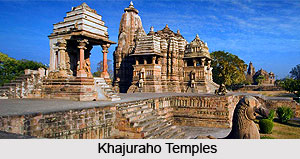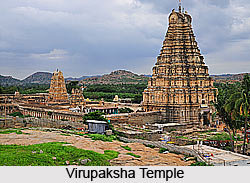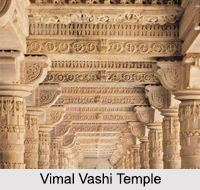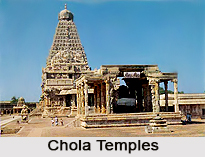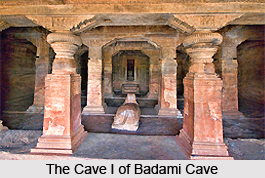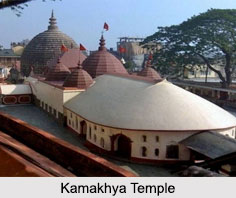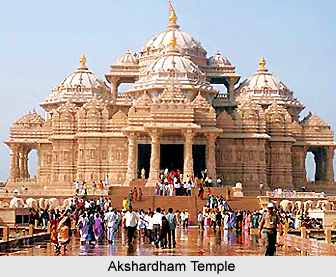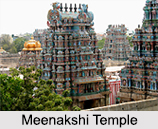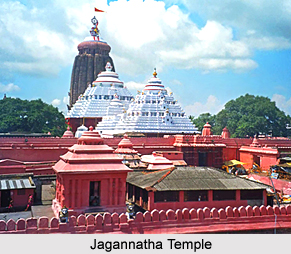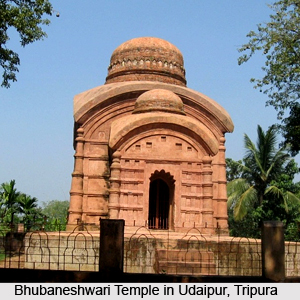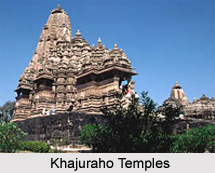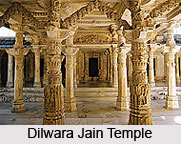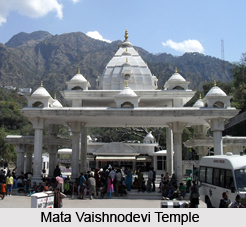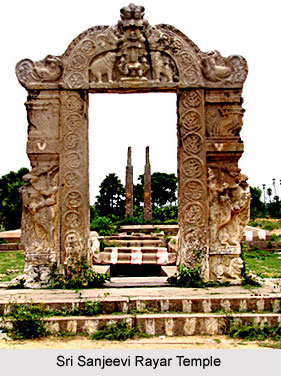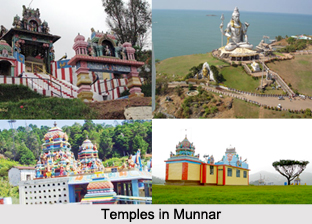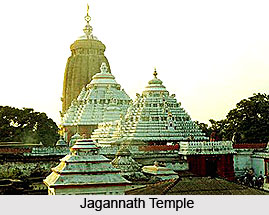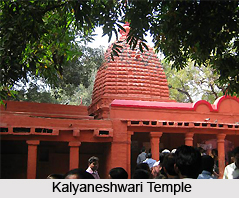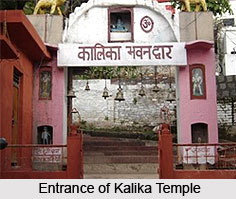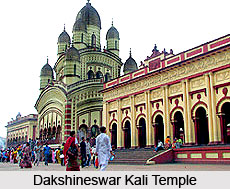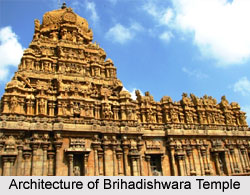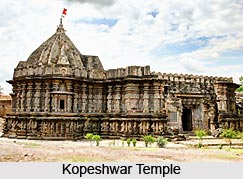 Kopeshwar Temple is at Khidrapur, Kolhapur district, Maharashtra. Khidrapur is on the bank of River Krishna at Taluka Shirol of Kolhapur. It is also accessible from Sangli. Technically it lies in the state of Karnataka (near the Karnataka-Maharashtra border). The temple was built sometime in the 7th Century AD during the reign of the Chalukya kings. However it was abandoned due to frequent invasions from neighbouring kings like the Rashtrakutas. It was built by Silhara King Gandaraditya in the 12th century and then by Seuna Yadavas. It is dedicated to Lord Shiva. The temple is an excellent example of intricate workmanship. It is built in carved basalt stone and is a testimony to the competent skill of its artisans.
Kopeshwar Temple is at Khidrapur, Kolhapur district, Maharashtra. Khidrapur is on the bank of River Krishna at Taluka Shirol of Kolhapur. It is also accessible from Sangli. Technically it lies in the state of Karnataka (near the Karnataka-Maharashtra border). The temple was built sometime in the 7th Century AD during the reign of the Chalukya kings. However it was abandoned due to frequent invasions from neighbouring kings like the Rashtrakutas. It was built by Silhara King Gandaraditya in the 12th century and then by Seuna Yadavas. It is dedicated to Lord Shiva. The temple is an excellent example of intricate workmanship. It is built in carved basalt stone and is a testimony to the competent skill of its artisans.
History of Kopeshwar Temple
The mythological story behind the name "Kopeshwar" is - Devi Sati (daughter of King Daksha) was married to Lord Shiva. Daksha didn"t like in son-in-law at all. He was about to perform some "Yajna" (Hindu ritual performed along with holy fire) and he didn"t invite Sati & Shiva. Devi Sati felt sad and went to meet her father asking the reason behind not inviting her husband. In turn, King Daksha insulted Shiva and it was unbearable for Sati to tolerate her husband"s insult. She jumped in the yajna. Hearing this news, Shiva was furious, destroyed Daksha"s Yajna and he punished Daksha by cutting his head. Later on, due to request of other deities, Shiva took back the curse and granted him life with goat"s head. It is believed that angry Shiva was brought to this place (temple) to cool his anger. Hence the temple got its name i.e. "Kop" means anger and "Eshwar" means Lord Shiva.
Architecture of Kopeshwar Temple
It has a vestibule with an open top. The sanctum is conical. The exterior has stunning carvings of deities and secular figures. Elephant statues sustain the weight of the temple at the base. The Kopeshwar Temple, also known as the Mahadev Temple, is divided into four sections.
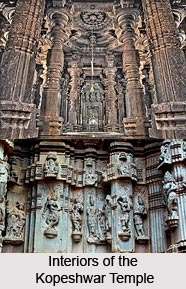 These include "Swargamandapa", "Sabhamandapa", "Antaral-Kaksha" and "Garbagriha". The temple is also known for its carved sculptures placed in its halls, old pillars, and carvings of various gods, goddess and dancing girls. It has 108 stone carved pillars in the interior and 92 elephant carvings on its exterior.
These include "Swargamandapa", "Sabhamandapa", "Antaral-Kaksha" and "Garbagriha". The temple is also known for its carved sculptures placed in its halls, old pillars, and carvings of various gods, goddess and dancing girls. It has 108 stone carved pillars in the interior and 92 elephant carvings on its exterior.
The Swargamandapa is built on total 48 pillars arranged in a circular pattern. The temple has total 95 pillars. It can be assumed that the yajnas were performed in its premise with the smoke making way to the skies (swarga-heavens) as an offering to the Gods. The Nandi (bull) idol so typical in Shiva temples is curiously missing in this Mandapa. Mythology attributes it to Shiva having instructed Nandi to escort his consort Sati to her father"s kingdom. So his idol is absent in the temple.
The Swargamandapa connects the Sabhamandapa (assembly hall) which is a dark thinly illuminated room. There is an Antaral-Kaksha separating it from the Garbagriha (sanctum). The Shikhara (Nagara style conical-roofed-superstructure) above the Garbagriha appears a latter addition. The Kapota (part of the entablature) is decorated with urahsringas (minor spires) and other frame like elements.
The interiors are decorated with figurines of Gods, Goddesses, Yaksha, Gandharva, Apsara, Surasundari, animals, motifs etc carved on the walls and pillars. Some even depict stories from epics like Ramayana and Mahabharata and parables from the works like Panchatantra.
The solace that holds the walls is built on the plinth and has the elephant fresco with deities mounted on elephants. The entrances have the typical floral-reptile motifs carved on the doorstep. There is also image of Lord Ganesha on the top and other figurines on the doorframe. The rear of the temple has a stone fountain described as the "Taraka Kunda". The entire temple is surrounded by a stone wall.
Many of these sculptures are defaced and are attributed to the vandalism during the Islamic invasions. It is alleged that one Moslem commander Khydar Khan order the mutilation of the elephant trunks. The village Khidrapur is named after this Khyder Khan.
